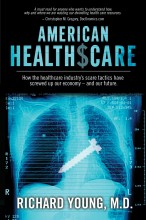A study was recently published in the New England Journal of Medicine about the cost-effectiveness of treating hypertension based on the most recent JNC 8 guidelines. This study particularly caught my eye, because previous cost-effectiveness analyses found that screening and treating for hypertension did not save money. The upfront costs of the doctors’ visits, labs, and medicines were greater than the savings down the road from fewer cases of heart disease and strokes. The current study concluded that in some cases it does save money, so I wanted to dig deeper to understand why this study reached a different conclusion.
This study was based on a model the authors call Cardiovascular Disease Policy Model. It is a Markov-based model, and it was clear that this model is very sophisticated. The authors put in a lot of work to make sure that their model accurately replicated known data sets of hypertension treatment outcomes. The authors presented results for several different scenarios. I want to focus on their findings for men age 34 to 59. For men, screening and treating hypertension was found to be cost-saving, for women it was not.
I was very curious about the details of not only the model but some of their specific findings. The article has a wonderfully detailed appendix. I want to focus on one table with cost and outcome numbers for stage 1 hypertension. The authors were very transparent and reporting the raw numbers of their estimated cost out and outcomes. They used national data to estimate how many Americans have hypertension but are not on treatment. The table below shows the main findings. (A QALY is a quality-adjusted life year, which is sort of the same as a year of life gained).
Men ages 35-59
| Strategy | CVD events | CVD deaths | CVD costs
(thousands) |
QALYs
(thousands) |
| Status quo | 195,000 | 49,100 | $32,548,707 | 44,162 |
| Stage 1 HTN
(2.3 M new RX) |
179,000 | 46,200 | $31,922,497 | 44,187 |
| Difference | 16,000
(-8%) |
2,900
(-6%) |
$626,210
(-2%) |
25
(+.05%) |
Women ages 35-59
| Strategy | CVD events | CVD deaths | CVD costs
(thousands) |
QALYs
(thousands) |
| Status quo | 101,000 | 20,600 | $20,256,506 | 44,995 |
| Stage 1 HTN
(1.6 M new RX) |
100,000 | 20,400 | $20,334,623 | 45,002 |
| Difference | 1,000
(-1%) |
200
(-1%) |
$78,117
(+.4%) |
7
(+.02%) |
These numbers mean that whether or not men and women in this age range were treated for hypertension, the lives of the vast majority of people were not affected at all. For men, the cost savings was 2% ($600 million out of $33 billion) and it yielded 25,000 (.05%) more quality adjusted life years out of 2.3 million patients. For women the costs went up slightly (.4%) and the number of quality-adjusted life years increased by .02%.
I have a few quibbles with the assumptions of this study, but none worth discussing in any detail. The magnitude of benefit was greater for older persons, those with diabetes or CKD, and those with stage 2 hypertension. But the overall finding that there were no dramatic differences in the treatment groups was unchanged.
To put these findings into perspective, let’s think about a recent report comparing the cost of certain procedures in different countries as reported by the International Federation of Health Plans. It found that for coronary artery bypass surgery the average cost in the US the $75,345 vs. $15,742 (79% lower) in the Netherlands. The fees for just the angiogram was $907 in the United States versus $174 (81% lower) in the Netherlands. Besides the cost differential, other developed countries usually do fewer procedures than in the U.S.
For people who believe that more primary care is one of the key ingredients for America to achieve better health and lower costs (which is clearly true), they must understand that screening and treating a common disease such as hypertension does not explain the cost savings and better outcomes of family medicine. Just to be clear, I’m not suggesting that family physicians stop screening for and then treating hypertension. It actually helps a little. But this should not be the main focus of any policymaker or politician who would like to see a much more efficient U.S. healthcare system.



Recent Comments